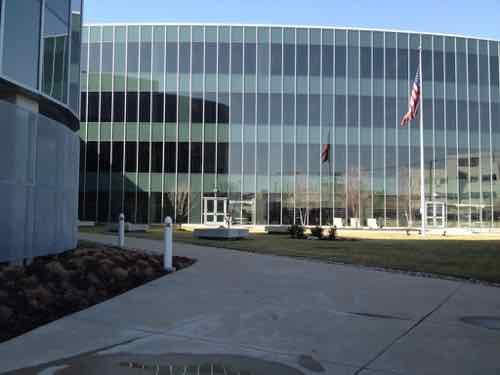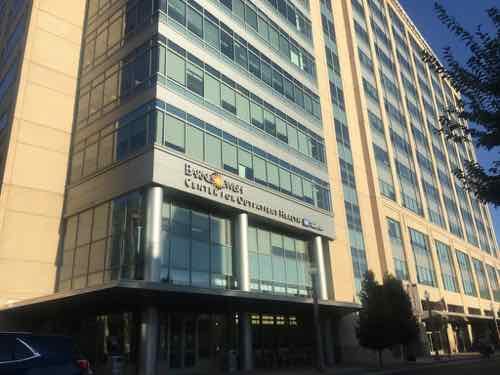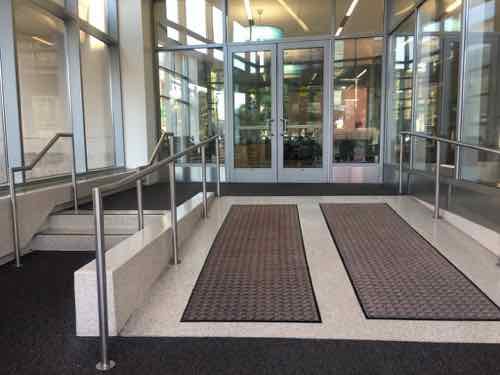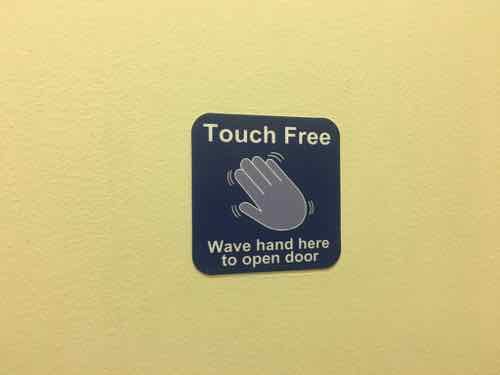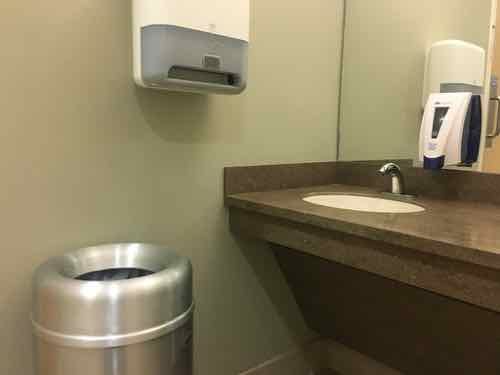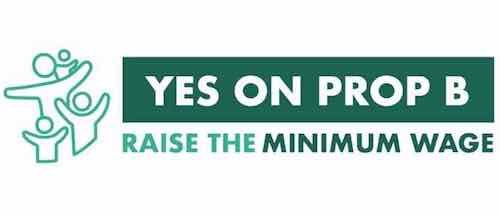Opinion: Illinois & Missouri Need To Study ‘Vehicle Miles Driven’ Tax To Replace Fuel Taxes
|
|
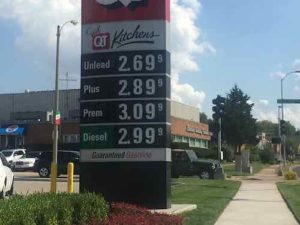
The recent non-scientific Sunday Poll on how Illinois should fund road infrastructure maintenance/improvements was because of current political commercials in their heated race for governor.
J.B. Pritzker is up with a new ad, attacking GOP Gov. Bruce Rauner and an affiliate of the Republican Governors Association over ads criticizing the Democratic governor candidate about a vehicle mileage tax.
The Rauner ad features a woman identified as “Denise Smith” warning that Pritzker “wants a car tax, which will also come along with a tracking device.” State Solutions, an RGA affiliate, accuses Pritzker in an ad of plans for a 1.5-cent-per-mile vehicle mileage tax.
Pritzker in January told the Daily Herald the idea of a vehicle mileage tax was worth “exploring” but has since said he was open to ideas on how to pay for a capital bill and wasn’t wedded to it. He did not identify a specific amount of mileage tax as the State Solutions ad alleges. (Chicago Tribune)
I used the following, from a 2016 article, to explain Illinois’ options for paying for needed roads, as outlined by the Metropolitan Planning Council (MPC):
GAS TAX
The MPC argues the state will need to raise $2.7 billion a year, half to spend and half to go towards bonds:This is equivalent to a $0.30/gal increase in state motor fuel taxes and a 50 percent increase in vehicle registration fees. The tax and fees should be indexed to the consumer price index to keep pace with inflation. MPC recommends the state constitution be amended to create a transportation trust fund to protect this revenue. To acknowledge the effect of these increases on lower- and middle-income Illinoisans, the state earned income tax credit should double to 20 percent of the federal amount.
Because the state’s motor fuel tax has been unchanged for so long, Illinoisans are paying far less for road maintenance today when inflation is calculated:
The Illinois Senate has used the MPC’s estimates to draft legislation that would raise the gas tax by 30 cents, making it the highest gas tax in the nation.
Of course, not everyone is happy with that proposal. The Illinois Chamber of Commerce says Illinois needs to look into other options to fix roads. The Chamber’s recommendation includes an increased state income tax and a lower wholesale gas tax, while getting rid of some tax exemptions for goods like food and medicine.
MILEAGE TAX
Senate President John Cullerton has proposed a different way to get around a gas tax hike; a mileage tax. Illinoisans would pay 1.5 cents per mile in one of three payment options. From the Daily Herald:
Drivers could have a device that tracks the miles through geolocation technology, charging only for the miles driven on public highways and roads.
Alternatively, they could have an odometer tracker, which reports only number of miles driven, not where. The downside to this, notes Susan Martinovich of CH2M, an environmental and engineering consulting firms, is that drivers would be charged for miles driven out of state.
Finally, Illinoisans could opt out of installing any devices and pay a flat mileage tax of 1.5 cents per mile for 30,000 miles.
A mileage tax would also help the state raise revenue even as gas usage declines, thanks to better fuel efficiency and electric cars. The MPC’s plan also recommended Illinois stop raising funds tied to gas purchases eventually. It pushed for a mileage tax system by 2025. (GovTech.com)
Cullerton, a Democrat, introduced SB3267 in February 2016. It never got far in the legislative process.
I want to step back from politics and look at the big picture.
The first US state tax on fuel was introduced in February 1919 in Oregon. It was a 1¢/gal tax. In the following decade, all of the US states (48 at the time), along with the District of Columbia, introduced a gasoline tax. By 1939, an average tax of 3.8¢/gal (1¢/L) of fuel was levied by the individual states.
In the years since being created, state fuel taxes have undergone many revisions.[6] While most fuel taxes were initially levied as a fixed number of cents per gallon, as of 2016, nineteen states and District of Columbia have fuel taxes with rates that vary alongside changes in the price of fuel, the inflation rate, vehicle fuel-economy, or other factors. (Wikipedia)
The first federal fuel tax happened after all the states had fuel taxes — in 1932 during the end of the Hoover administration. The initial temporary tax became permanent. Eventually federal fuel taxes became part of a trust fund for roads. All was good for decades, but then it began to change:
The Corporate Average Fuel Economy (CAFE) standards are regulations in the United States, first enacted by the United States Congress in 1975, after the 1973–74 Arab Oil Embargo, to improve the average fuel economy of cars and light trucks (trucks, vans and sport utility vehicles) produced for sale in the United States. (Wikipedia)
These CAFE standards have been highly effective at improving the fuel economy of vehicles. Less fuel, however, means less revenue for roads. Politicians at the state & federal levels are reluctant to increase fuel taxes. The smart solution is to look at a Vehicle Miles Traveled (VMT) tax. Oregon, the first state with a fuel tax became the first state to begin a test of a mileage tax.
Way back in 2001, Oregon recognized the problem that many state legislatures are now staring down: gas tax revenue is falling inexorably as vehicles become more fuel-efficient, threatening transportation budgets. The state launched a task force that investigated 28 alternative funding mechanisms before selecting a mileage tax as the one that best met a wide range of criteria: fairness, efficacy, ease of implementation, public acceptance, enforceability, privacy protection, etc.
In 2006, the state recruited 299 volunteers for participation in a year-long trial of a prototype system. Because any real-world mileage tax will be phased in over a long period of time, it has to harmonize with the existing gas tax. The Oregon experiment neatly solved this problem with a pay-at-the-pump system:
* A small GPS receiver in participants’ cars tracked miles driven.
* When participants went to the gas station to fill up, a wireless scanner at the pump detected the GPS receiver and recorded the car’s current mileage, which was then sent to a central database to determine miles driven since the last payment. No specific location data was transmitted.
* The payment system at the gas station applied either the standard gas tax (for cars that didn’t have a GPS system) or the mileage tax (for participating cars). The experiment was designed to be revenue neutral, so fees were about the same in either case. (Terrapass)
Of course, a VMT tax also has drawbacks:
Poor, disadvantaged, and rural people tend to commute farther than the affluent, and drive less efficient cars. The gas tax already charges them disproportionately. A straightforward VMT would too. Any lawmakers crafting a Vehicle Miles Traveled framework would need to consider such concerns. Again, technology could come to the rescue, identifying drivers who merit discounts or subsidies. (Wired)
If the feds & states all switched to a VMT tax to replace fuel taxes we’d see much more compact development, greater use of public transit. etc. — in a few generations. Missouri & Illinois should both join Oregon & others in studying VMT:
California is conducting a pilot VMT study, and the state of Washington is expected to conduct one, as well. Connecticut, Delaware, New Hampshire, and Pennsylvania have all applied for federal support to test how a VMT tax could work across multiple states. (Brookings)
It’s time to change how we fund road construction.
— Steve Patterson
